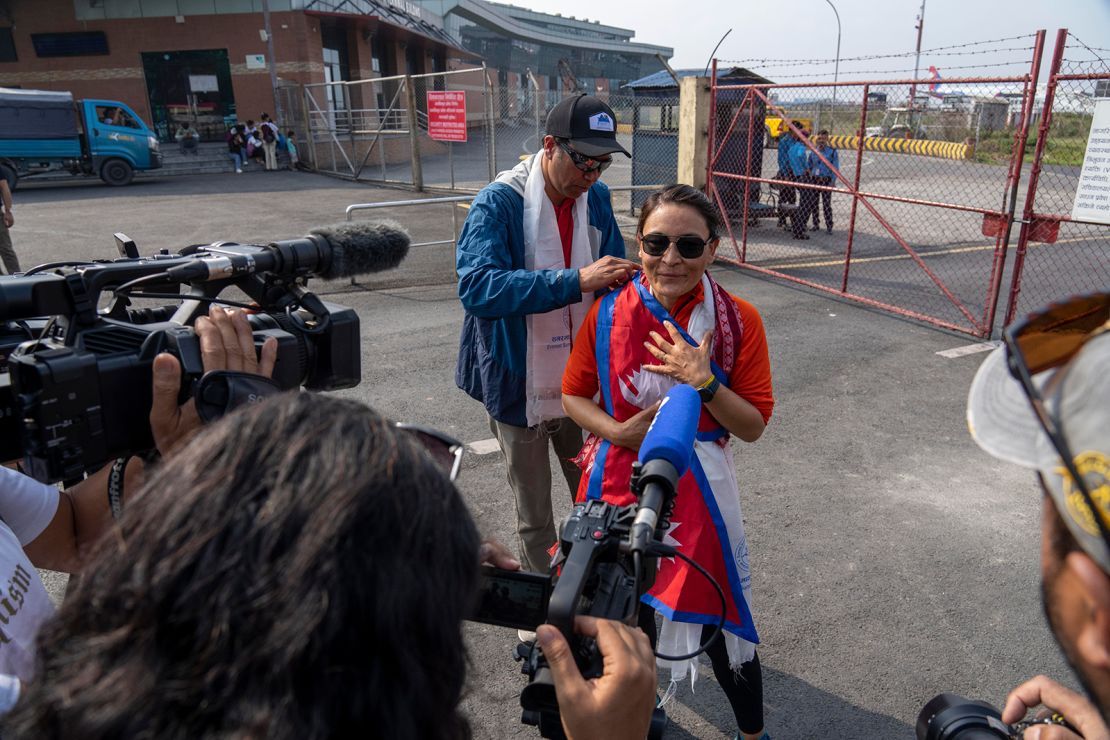Her journey from Everest Base Camp to the top took 14 hours and 31 minutes, then the descent from Everest was another nine hours and 18 minutes. She departed Base Camp at 3:52 p.m. on May 23, arriving at the top of the world at 6:23 a.m. the following morning.
Climbing overnight helped Lama bypass the big crowds, she tells CNN. She estimates that between May 21 and 22 there were 6,700 people between Camps Two and Four. On the morning of the 24th, she was behind “60 or 70” people.
The records for fastest ascent are set from Base Camp due to the need to acclimate to the extreme altitude. Lama spent three weeks there ahead of her push to the top and was joined by her climbing partner, Samantha McMahon, who has set the goal of becoming the first Australian woman to climb all of the world’s 8,000-meter peaks.
Mount Everest is 8,849 meters (29,032 feet) high.
According to Guinness World Records, which looks at the total time it takes to make the return trip from Base Camp, Lama set her first Everest record in 2018, with a time of 39 hours and six minutes. That record was broken in 2021 by Hong Kong native Ada Tsang in 25 hours and 50 minutes. This year was Lama’s second-ever Everest ascent.
Currently, the record for fastest ascent by a male climber is 10 hours and 56 minutes, set by Nepali Lhakpa Gelu Sherpa in 2003.
Despite the achievement, Lama says she’s not obsessed with chasing a record or being recognized by Guinness. She says that someone else contacted the record-keeping company in 2018 on her behalf.
Although she never knew that mountaineering was a profession, Lama lived most of her life at 4,500-5,000 meters above sea level. She was raised in a yak herding community in Nepal’s remote Tsum Valley, speaking a local dialect. It wasn’t until she moved to Kathmandu as a teen that she learned to speak Nepali and then English.
“Mountains are my playground and my home,” she tells CNN. “A mountain never says that you are a woman and you are a man. Which is why I like mountains, because a mountain is always equal.”
And equality is part of Lama’s work. The mountaineering guide says currently her climbing clients are about 75% male and 25% female, but she’d like that to become fifty-fifty someday.
“I’m sure my dream will come true,” she says.
Lama has already summited Alaska’s Denali, the tallest mountain in North America, and hopes to climb K2 in Pakistan, the world’s second-highest peak.

The 2024 climbing season has brought several changes to the world’s highest peak.
For the first time, all climbers were given tracking chips to wear during their trip, which would make it easier to find and rescue a lost person.
They were also required to save their poop in plastic bags and take it off of the mountain. Trash, including human waste, has been a significant problem as the number of Everest climbers increases.









